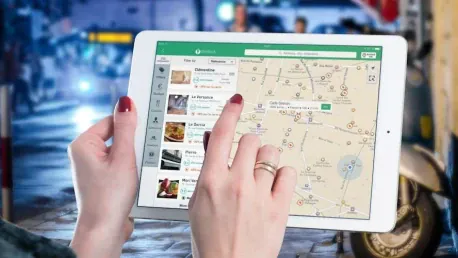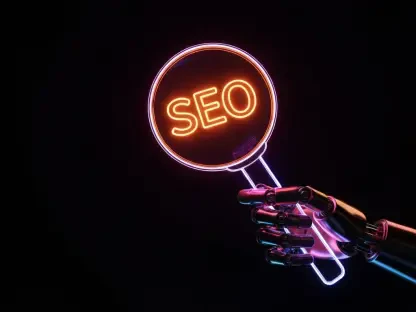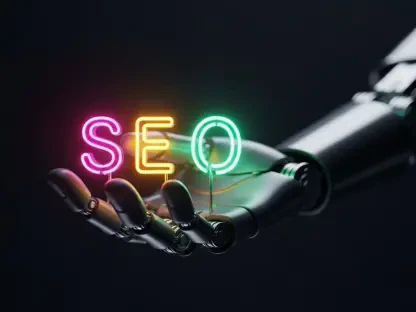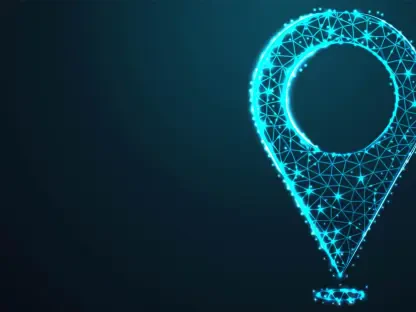Geofencing, a revolutionary technology that leverages GPS or RFID to establish virtual geographic boundaries, has become indispensable across various industries. By enabling businesses to send messages or push notifications to mobile devices that enter or exit these designated areas, companies can engage customers in real time. This burgeoning market, valued at USD 2.20 billion in 2023, is anticipated to soar to USD 12.23 billion by 2032, demonstrating a compound annual growth rate (CAGR) of 21.0%. The technology’s applications span marketing, healthcare, gaming, and retail, greatly enhancing customer engagement, driving brand recognition, and providing precise location-based services. This article delves into how leading companies shape this fast-growing market.
Enhancing Customer Engagement and Marketing Strategies
Geofencing offers businesses an unparalleled opportunity to deliver personalized messages and promotions based on a consumer’s real-time location, resulting in notably higher engagement and conversion rates. Companies can strategically interact with potential customers, fostering brand loyalty and enhancing customer experience. Bluedot Innovation, for example, specializes in APIs and SDKs tailored for location-based marketing, emphasizing precision to boost customer engagement. Their versatile solutions extend to various applications, including toll payments and drive-through services, showcasing the adaptability of geofencing technology to different business models.
IBM Corporation offers a geofencing operator that allows enterprises to define custom geographical boundaries and monitor objects within these regions. This technology proves essential for delivering targeted marketing services by tracking users’ mobile phones entering or exiting these zones. Similarly, Microsoft has integrated geofencing capabilities into its Microsoft 365 Outlook suite and Dynamics 365 Field Service, leveraging Azure maps for accurate location tracking. These efforts illustrate the seamless integration of geofencing into existing platforms to enhance user interaction and operational efficiency, thereby demonstrating the technology’s potential to revolutionize marketing strategies.
Revolutionizing Healthcare with Geofencing
In the healthcare sector, geofencing is transforming patient monitoring and process tracking, essential for managing critical functions during medical emergencies. Given the increasing demand for quality healthcare services, the integration of geofencing technology is quickening its pace. Companies like Google LLC offer Geofencing APIs that enhance brand experiences by triggering actions as users enter or exit predefined areas. This technology can be adapted for healthcare applications to improve patient care and streamline operations, reflecting its versatility.
Radar Labs Inc. provides a cohesive location platform featuring geocoding and mapping services through SDKs and APIs to enhance customer experiences. In October 2023, they introduced a geo-compliance and fraud detection solution and secured USD 55 million in Series C funding in February 2022 to expand their geofencing operations. Such innovations underscore the technology’s potential for adaptation in healthcare, ensuring regulatory compliance and elevating patient care standards. As geofencing’s application in healthcare grows, it promises to significantly improve patient management and emergency response, highlighting its critical role in advancing healthcare technology.
Advancements in Gaming and Retail
Geofencing technology is arguably making some of its most impressive strides within the gaming and retail sectors. LocationSmart, based in California, offers cloud-based geolocation services essential for IoT asset tracking and gaming. Their location-as-a-service model enhances security and compliance in gaming, minimizing fraud risks. For instance, in March 2020, they launched IP Intelligence and Device Profiling features, significantly improving gaming verification and compliance. This development illustrates geofencing’s crucial role in safeguarding the integrity of digital interactions within the gaming industry.
In the retail domain, companies like Infillion provide geofencing technology for location-based advertising and push notifications. Their solutions include GAMBAL for location intelligence and InfillionX, a digital advertising platform that assesses customer visits and engagement with ads. As a result, retailers can deliver highly personalized promotions, thereby enhancing customer experiences and driving sales. This sector’s rapid adoption of geofencing technology reflects its potential to revolutionize retail marketing strategies by aligning closely with consumer behaviors and preferences.
Leveraging Geofencing for Security and Compliance
Security and compliance constitute fundamental aspects of geofencing technology, increasingly pivotal in a digitally interconnected world. ESRI’s ArcGIS Field Maps feature functionalities such as location sharing and real-time analytics, which are crucial for maintaining security across various sectors. The launch of their ArcGIS Velocity platform in February 2023 further exemplified the integration of IoT technology for instantaneous geospatial data analysis, broadening the scope and applicability of geofencing. These developments highlight the importance of geofencing in enhancing security protocols and ensuring compliance with regulatory standards.
Apple Inc. offers a proximity application that tracks mobile user locations, triggering specific actions upon entering or exiting geofenced areas. The company has publicized reports concerning global geofencing data requests, predominantly linked to stolen devices and warrants by authorities. This technology proves critical across various industries, ensuring security by meticulously monitoring user movements and maintaining stringent compliance measures. As geofencing technology continues to evolve, its applications in security and compliance are expected to expand, reinforcing its necessity in the contemporary digital landscape.
Driving Innovation and Strategic Partnerships
The geofencing market is distinctly characterized by relentless innovation and strategic partnerships, enabling sustained growth and technological advancements. Leading companies such as Bluedot Innovation, IBM, and Google are at the forefront, leveraging sophisticated technologies to enhance accuracy and user engagement. Through continuous improvements and strategic collaborations, these companies are driving innovations that reshape how businesses and customers interact. As the adoption of geofencing becomes widespread, these advancements are anticipated to profoundly influence market dynamics and consumer behavior.
Embitel delivers robust geofencing technology specifically designed for the M-commerce, E-commerce, and retail sectors. Their solutions include virtual perimeters around specific locations, comprehensive customer profiles, and alert generation within designated areas. Such innovations significantly enhance customer experience and operational efficiency, showcasing the transformative potential of geofencing technology. By fostering strategic partnerships and focusing on continuous improvement, these companies underscore the expansive growth potential of the geofencing market. This drive toward incessant innovation ensures the technology remains at the forefront of digital transformation, capable of adapting to evolving market demands.
Conclusion
Geofencing, a groundbreaking technology that utilizes GPS or RFID to create virtual geographic boundaries, has become essential in a variety of industries. By allowing businesses to send targeted messages or push notifications to mobile devices when they enter or exit specific areas, companies can interact with customers in real time. This rapidly growing market, valued at USD 2.20 billion in 2023, is projected to soar to USD 12.23 billion by 2032, reflecting an impressive compound annual growth rate (CAGR) of 21.0%. The impacts of geofencing span across marketing, healthcare, gaming, and retail sectors, significantly boosting customer engagement, increasing brand awareness, and offering precise location-based services. This article explores how top companies are influencing and shaping this burgeoning market. As the adoption of geofencing technology continues to rise, its potential to revolutionize various industries and enhance customer experience cannot be overstated, making it a pivotal tool in today’s digital landscape.









